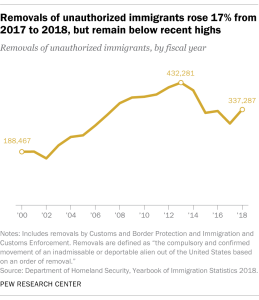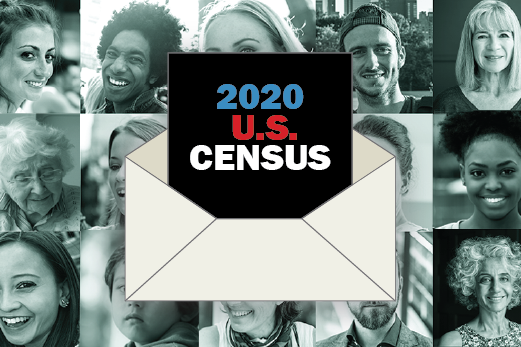

Once a decade, the federal government asks everyone living in the United States to be counted in a census. The 2020 count began in Alaska in January, and the first numbers will be published by the end of the year. As the national enumeration moves forward, here are the basics about this year’s census. (For a more in-depth look, sign up to take our five-part email course.)
Who
[callout align=”alignright”]

Try our email course on the U.S. census
Learn about why and how the U.S. census is conducted through five short lessons delivered to your inbox every other day. Sign up now!
The 2020 census counts everybody who lives in the U.S. That includes foreign citizens (including unauthorized immigrants), with the exception of tourists and business travelers. The goal is to count everyone once, only once and in the right place. The Census Bureau’s own research finds that although the national count has been accurate for the country as a whole, some groups, such as renters and black and Hispanic U.S. residents, have been undercounted. As a result, the government gives extra attention to counting these hard-to-count populations. Census participation is required by law, though the government rarely takes punitive action against those who do not respond.
When
Most households will receive mailings from March 12-20, inviting them to respond by internet, mail or phone. In about 5% of households – mainly those in areas that have been damaged by natural disasters or where people don’t receive mail at their home address – census workers either collect information in personal interviews or drop off a census form that can be mailed back. From May to July, census workers will knock on the doors of households that haven’t responded. The first results – the state population counts used to apportion seats in Congress – are due by Dec. 31, 2020. (Update: As a result of the coronavirus outbreak, the Census Bureau has delayed fieldwork, so some of these dates have changed. The agency also asked Congress to extend the legal deadline to publish data.)
Where
The census counts people at their address on Census Day, which is April 1 (even though many people fill out their forms earlier than that). Most people are counted at their home addresses, but census workers also conduct special counts at institutions ranging from prisons to college dormitories; at unusual locations where people live, such as marinas, campgrounds and hotels; at soup kitchens and other places that serve people without homes; and on the street where people spend the night. People are counted where they live and sleep most of the time, under a complicated set of rules. For example, college students who live in college or university housing are counted there, even if they might be staying at their parents’ or guardians’ home while on break or vacation on the day itself.
What is asked
The 2020 census questionnaire asks the following of everyone: name, age, birth date, sex (male or female), whether they are of Hispanic origin, and their race. In homes with more than one person, everyone else is asked how they are related to the person who filled out the form. (New for the 2020 census are write-in boxes for white and black respondents to provide more detail about their origins, as other racial groups already can. This year’s form will also include a check box for same-sex partners or spouses.)
The person who fills out the form is also asked whether the home is owned or rented, the home phone number and additional questions to make sure everyone who lives in the home is included. There is no question about citizenship on the census form, though a Pew Research Center survey in January 2020 found that most people don’t know that. (The Trump administration sought to include a citizenship question on this year’s form, but the Supreme Court ruled against the plan.) The Census Bureau also never asks for Social Security numbers, bank or credit card information, money or donations, or anything on behalf of a political party.
How
For the first time, most U.S. households can respond online, and the Census Bureau expects most will do so. Census mailings include a unique code and instructions on how to access the online form. The Census Bureau also sends paper questionnaires to some areas, based on its research showing that people living in those places are less likely to respond online. (Households that don’t answer after two reminders will receive a paper questionnaire and another reminder.) The government is spending nearly $500 million on advertising and outreach to hard-to-count groups and offering assistance in dozens of languages. If a household doesn’t respond after up to five reminders and a census worker cannot reach its residents after a home visit, the Census Bureau will ask for the information from neighbors, landlords or other reliable sources, or use other government records or statistical techniques to fill in the missing data.
Under federal law, individual census responses are confidential for 72 years and cannot even be given to other government agencies.
Why
The U.S. Constitution requires an “actual enumeration” of the population every 10 years in order to apportion seats in the House of Representatives among the states. States and localities also use census numbers for redistricting – to draw political boundary lines for their legislatures and other government districts. The census also plays an important role in guiding distribution of federal funding (an estimated $1.5 trillion a year or more), as well as identifying needs for government services such as schools and roads. And census statistics are the basis for a wide range of research and business decisions.
Note: This post was updated on April 15, 2020, to reflect changes in fieldwork dates for the 2020 census.
